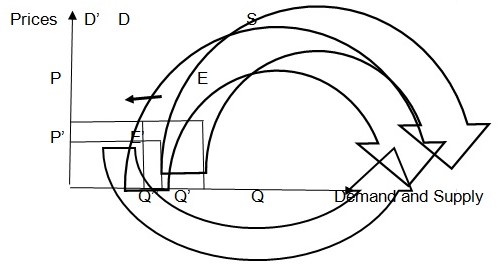Introduction
The article under study is a report by Chris Isidore titled “Auto Sales Plunge” dated July 1, 2008 (Isidore, 2008). The car market which includes SUVs and pickup trucks has been facing a decline in demand in the US automobile market. The essay discusses the reasons for the shift in demand in automobiles by consumers.
Main body
The article reports a drop in sales of the US demand for automobiles in the month of June 2008. The sales figures dropped by 13 percent from the sales of SUVs and trucks in the same time last year (Isidore, 2008). Most of the major automakers have experienced this slump. General Motor’s US sales dropped by 13 percent, Toyota faced a drop of 21 percent in sales, and Ford Motor’s US sales dropped by a whopping 28 percent (Isidore, 2008). The slump is attributed to the global spiralling of the oil prices, which has brought down demand for SUVs and pickups. But the demand for fuel efficient cars too has experienced a decline in demand. So the article indicates that this is due to the consumer’s expectations of a global and US recession which has cut down auto spending. But the article also speculates if the demand supply gap in the US auto market is due to a shift in demand or a shift in supply of automobiles. The reason for such speculation is primarily due to unavailability of the models in the market which the customers wanted. But the car manufacturers attribute this shift in supply due to annual scheduled plant shut down. What they are concerned with is the declining demand for automobiles (especially) SUVs and trucks. The reasons they believe have affected are increasing fuel prices and availability of fuel efficient vehicles.
According to the Article, there has been a decline in demand of SUVs and pickup trucks three reasons have been posed by the manufacturers of automobiles as the possible causes for change in SUV and truck demand: oil prices, fuel-efficient car prices, and looming economic recession in the US. Oil being a complementary good to cars, the increase in price of oil will lead to a decline in the demand for cars. Fuel efficient automobiles are substitutes for SUVs and pickup trucks which are gas-guzzlers and require more gas and provide less mileage. Hence fuel efficient cars are a cheaper alternative to SUVs and trucks. Moreover, customers expect adverse economic conditions due to the fear of an expecting recession in the US. These three non-price determinants of the demand for SUVs and trucks altered and lead to a decline in the demand for the products. This decline in demand led to a decline in demand for the product. This can be found from the following analysis of the three determinants.
- With an increase in oil prices, the demand for SUVs and trucks fell. Oil being a complementary good, an increase in the price of oil led to a decline in demand for oil. As less oil was available for the running the car and oil itself became costlier, the demand for cars also fell.
- Fuel-efficient cars are a cheaper alternative to gas guzzling SUVs and trucks (Isidore, 2008). Hence being a cheaper substitute the customers shifted their demand towards this product and by assumptions customers take rational decision and are influenced by price changes.
- The US economy is feared to undergo a recessionary phase. This adverse expectation regarding the market has dampened the demand for cars in the country as people are more eager to save and reap interest on their money rather than spend them on consumer durables.
This decline in demand will lead to an inward shift of the equilibrium price and quantity demanded. So in order to retain equilibrium situation, the manufacturers i.e. the suppliers of the product have to reduce their production and supply of the product. This has been demonstrated in figure 1, which shows that due to a decline in demand of SUVs and trucks the demand curve shifted to the left which indicated that the overall demand changed to change in exogenous factors determining the demand for the product which were otherwise taken constant in the demand-supply analysis.

As figure 1 shows that due to the change in the constant determinants of demand in the US automobile market the demand for SUVs and trucks shifted to the left, from D to D’. As the demand curve shifts leftward, there is a gap in demand and supply of the good. There arises an excess of supply to demand. As supply increases there are more cars available in the market, which drives down the prices of the good. At price P quantity demanded by customers according to D’ is Q’’. But this quantity is supplied by the manufacturers at a lesser price. This leads to price adjustment in the market and a left-ward shift in the demand curve and the supply of SUVs and trucks remaining same, the equilibrium point shifts from E to E’. The quantity demanded as well as the price of the product declines. If the market did not adjust to the change in demand and the price would have remained same, then there would be an excess of supply of cars. The market demand curve for SUVs and trucks shifts left due to ride in oil prices, availability if a cheaper alternative in terms of fuel-efficient car prices, and customer expectation of a looming economic recession in the US. This causes the equilibrium price to rise and the equilibrium quantity to fall. The market price has to fall to eliminate a potential surplus at the initial price P.
Conclusion
Thus, we may conclude that due to changes in the non-price determinants of cars, the US auto market experienced a slump in auto demand. The reasons points at a decline in the prices of cars, but further research is required in order to determine the extent to which the prices are expected to fall.